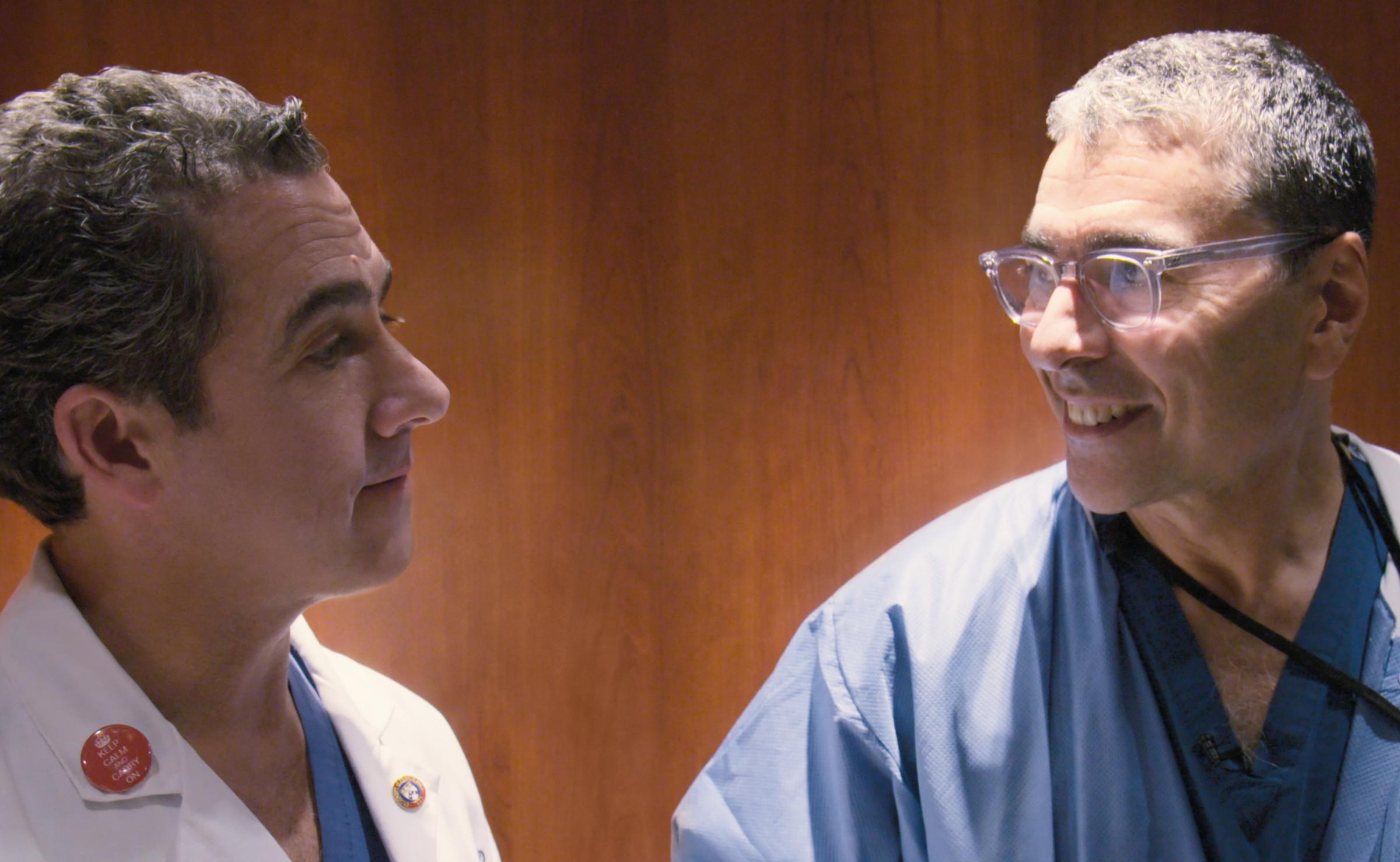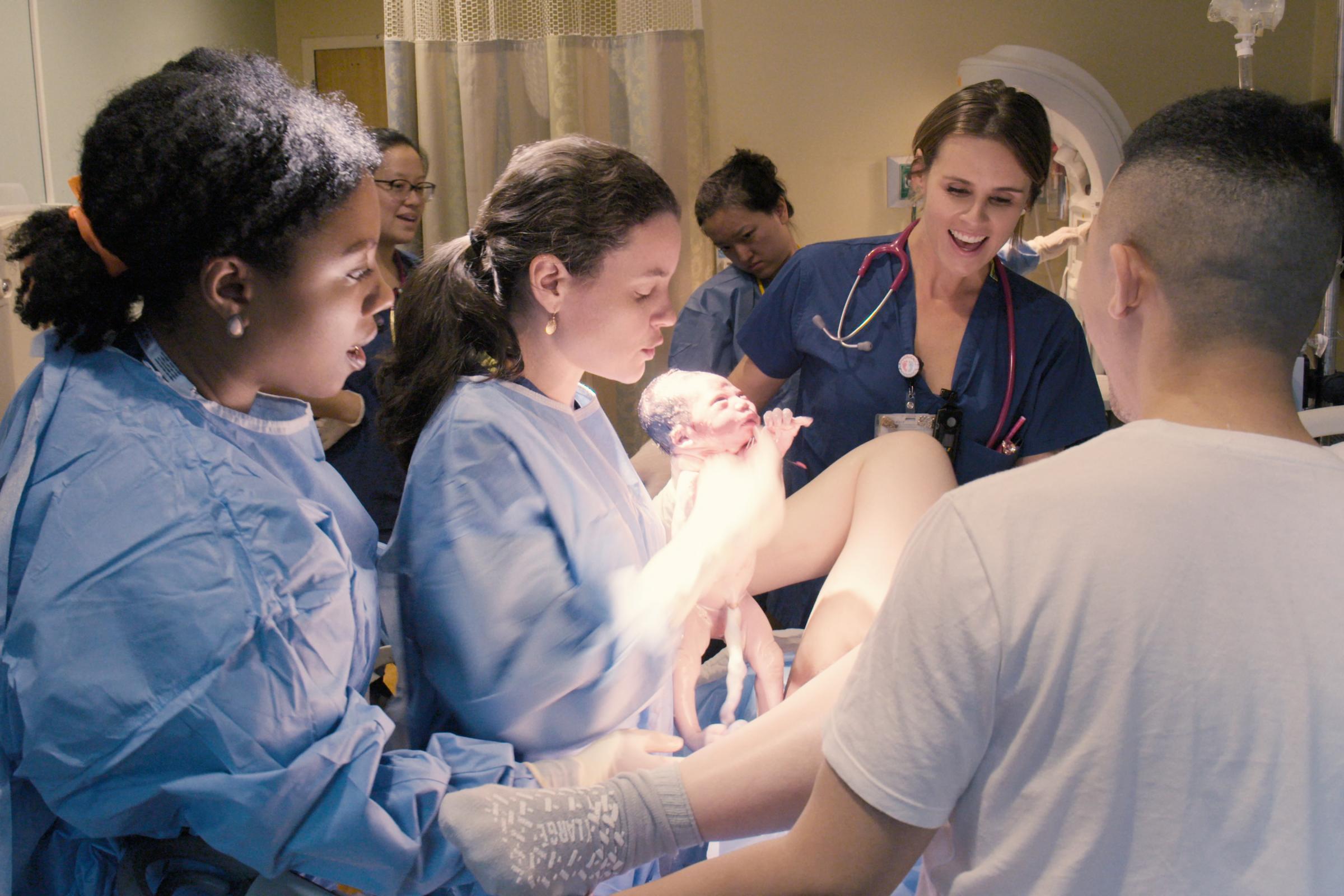It may have taken a pandemic for Americans to collectively express our appreciation for health care workers, but they’ve always had an outsize presence on TV. Among the series that have defined generations are medical shows like E.R., Grey’s Anatomy and M*A*S*H. General Hospital is our longest-running soap. As flailing broadcast networks grasp for perennial crowd pleasers, it seems as though everything on their schedules that isn’t a cop or lawyer show is a doctor show. And yet, somehow, I’ve never seen anything like Lenox Hill before.
Arriving on Netflix June 10, the eight-part docuseries follows four physicians at the titular New York City hospital over the course of several months on the job. Once a “glorified community hospital” where people came largely to give birth or die, according to one subject, neurosurgery department chair Dr. David Langer, it has over the past several years become a more diverse and ambitious institution. By choosing the doctors they profile there with care, director-producers Ruthie Shatz and Adi Barash capture the astounding range of personalities, specialities and styles of care the medical profession encompasses—and do justice to the many varieties of everyday heroism that take place behind hospital doors.
For Langer and his vice chair, Dr. John Boockvar, that means supporting patients and their loved ones, as well as leading teams of junior colleagues, as much as it means doing the precise, stressful, high-stakes work of brain surgery itself. The directors highlight Boockvar’s deep involvement in cancer research and don’t sugarcoat the frustrations Langer faces in balancing patient care, his mentees’ educations and administrative responsibilities. (“Being a chairman is similar to being a juggler,” he deadpans, “except instead of juggling three tennis balls, it’s more like juggling three knives on a skateboard, but as you’re skateboarding down the road, someone throws you three new wiffle balls and adds some serious headwind.”) Both men speak about their families with fierce affection; even if they didn’t explain that they approach life-or-death decisions as though it were their parent or child in the operating room, that sentiment would come through in the emotion the cameras witness.

Elsewhere at Lenox Hill we meet Dr. Amanda Little-Richardson, the chief resident in obstetrics and gynecology—who happens to be pregnant herself. A young black woman at a professional and personal crossroads, she offers thoughtful perspective on not just the historical dearth of people of color at a hospital with so many nonwhite patients, but also the financial privilege that enabled her to become a doctor. Her triumphs in the delivery room are tempered by the worries she and her husband share over an abnormal ultrasound.
Months deeper into her own pregnancy, Dr. Mirtha Macri thrives on the bustle of the emergency room. For this indefatigable practitioner, the challenge of treating patients who may be intoxicated, hysterical or homeless—some of whom need a social worker or a hot meal more urgently than a physician—is invigorating. I came away from her segments energized, too, by the certainty that Macri had found her calling, and that her fitness for such a career was a boon to everyone in her care.

Shatz and Barash keep the show’s structure loose, moving fluidly between and within departments, and spending enough time outside the office to ensure they’re painting a full picture of each subject. A chronological timeline, as opposed to individual case studies, allows viewers a greater sense of the bonds patients form with doctors and the toll an extended hospital stay can take on a family. Though I’m curious about why they chose to contrast two white, male neurosurgery stars with two pregnant female physicians of color, it’s the directors’ commitment to letting their stories unfold naturally that lends Lenox Hill such rare authenticity. From the ecstasy on a new mother’s face when she sees her baby for the first time to the sight of a department rallying around a gravely ill colleague, the show comes by its emotional resonance honestly. (To say that I teared up often would be an understatement.)
Lenox Hill would have been a remarkable achievement regardless of timing, but the preoccupations of the coronavirus era are bound to afford the show more attention than it would have otherwise garnered. And that feels right. Though it was shot long before the pandemic unleashed chaos on urban hospitals, it’s a tribute to the qualities so many health care workers have displayed—intelligence, empathy, humility—as they rise to an unprecedented challenge.
More Must-Reads from TIME
- Caitlin Clark Is TIME's 2024 Athlete of the Year
- Where Trump 2.0 Will Differ From 1.0
- Is Intermittent Fasting Good or Bad for You?
- The 100 Must-Read Books of 2024
- Column: If Optimism Feels Ridiculous Now, Try Hope
- The Future of Climate Action Is Trade Policy
- FX’s Say Nothing Is the Must-Watch Political Thriller of 2024
- Merle Bombardieri Is Helping People Make the Baby Decision
Contact us at letters@time.com